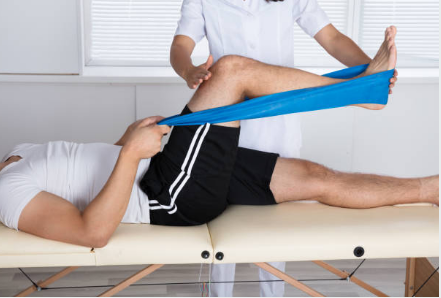Engaging in physical activities, whether on the sports field or during a workout, brings immense joy and health benefits. However, the occasional setback in the form of a pulled hamstring muscle can throw a wrench into one’s active lifestyle. In this comprehensive blog post, we will explore what a pulled hamstring muscle is, delve into its causes, and outline effective treatments required for a successful recovery. Let’s unravel the intricacies of this common injury and discover the path to healing.

Understanding the Pulled Hamstring Muscle:
The hamstring muscles, located at the back of the thigh, play a crucial role in activities that involve bending the knee and extending the hip. A pulled hamstring, also known as a hamstring strain or tear, occurs when the muscle fibers or tendons are stretched beyond their limits. This injury is graded on a scale from mild to severe, depending on the extent of damage.
Causes of Pulled Hamstring Muscles:

- Overexertion and Fatigue: Pushing the body beyond its limits, especially when fatigued, increases the risk of a pulled hamstring muscle. This is common in athletes or individuals engaging in intense physical activities without proper rest. Cross fit comes to mind for example.
- Poor Flexibility: Limited flexibility in the hamstrings can make them more susceptible to strain. Inadequate warm-up and stretching before engaging in physical activities can contribute to this vulnerability.
- Sudden Movements: Swift and abrupt movements, such as sprinting or jumping, can strain the hamstring muscles if the body is not adequately prepared. This is often seen in sports that involve quick changes in direction leading to a pulled hamstring muscle.
- Muscle Imbalances: Weakness or imbalances in the muscles surrounding the hamstrings can lead to increased stress on these muscles during movement, making them more prone to injury.
- Previous Injuries: Individuals who have previously experienced hamstring injuries may be at a higher risk of recurrence. Proper rehabilitation and strengthening exercises are crucial to prevent reinjury.
- Age and Fitness Level: Aging can affect muscle elasticity, making older individuals more susceptible to hamstring injuries. Additionally, inadequate conditioning and fitness levels can contribute to strain.
Treatment Required for Recovery from Pulled Hamstring muscle

- Rest: The first and foremost step in treating a pulled hamstring is to allow the muscle to rest. Avoid activities that strain the injured muscle, and give it the time it needs to heal. Continuing to engage in strenuous activities may worsen the injury.
- Ice: Applying ice to the injured area helps reduce swelling and alleviate pain. Ice can be applied for 15-20 minutes every 2-3 hours during the initial 48 hours after the injury.
- Compression: Wrapping the injured hamstring with a compression bandage can help minimize swelling and provide support. Ensure that the compression is snug but not too tight to avoid restricting blood flow.
- Elevation: Elevating the leg when resting helps reduce swelling by allowing fluid to drain away from the injured area. Prop the leg up with pillows when lying down or sitting.
- Anti-Inflammatory Medications: Non-steroidal anti-inflammatory drugs (NSAIDs) like ibuprofen can be used to alleviate pain and reduce inflammation. However, it’s essential to consult a healthcare professional before using any medication.
- Physical Therapy: Seeking the guidance of a physical therapist is crucial for a structured and effective rehabilitation plan. Physical therapy includes targeted exercises to strengthen the hamstring muscles, improve flexibility, and correct any imbalances that may have contributed to the injury.
- Stretching Exercises: Gradual and gentle stretching exercises are essential for restoring flexibility to the injured hamstring. These exercises should be incorporated into the rehabilitation plan and performed under the guidance of a qualified professional.
- Heat Therapy: Once the initial swelling has subsided, applying heat to the injured area can help relax muscles and promote blood flow. Heat therapy is typically introduced in the later stages of rehabilitation.
- Gradual Return to Activity: Rushing back into regular activities or sports without proper healing can lead to reinjury. A gradual and phased return to normal activities, under the guidance of a healthcare professional, is essential for a successful recovery.
- Preventive Measures: To prevent future hamstring injuries, it’s crucial to address any contributing factors. This may include improving overall flexibility, incorporating regular strength training, and ensuring proper warm-up before engaging in physical activities.
Recovering from a pulled hamstring muscle requires patience, diligence, and a well-structured rehabilitation plan. Whether you’re a seasoned athlete or someone who enjoys an active lifestyle, understanding the causes and appropriate treatments for a pulled hamstring is key to a successful recovery. By incorporating rest, ice, compression, elevation, and seeking professional guidance through physical therapy, individuals can navigate the road to recovery with confidence. Remember, healing is a gradual process, and by taking the necessary steps, you’ll soon be back on your feet, ready to embrace the activities you love.






